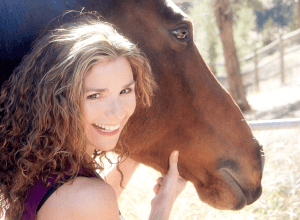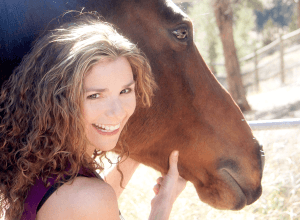
Regarding the quest to further deepen the bond between companion animals and the people who love them, there are a few basic principles which I always teach to my clients and students. Through a thorough understanding of the exact meaning of these three simple principles, almost any animal can be taught to do, or not do, almost anything.
The first principle is: safety first. That is for you, AND the animal. With horses that makes the most intuitive sense. If you want to accomplish a task with the animal, but the horse is becoming stressed or tense, or you are, then safety does become a concern and a serious reconsideration of the current tactic needs to occur. I find that often just taking a short break from the situation and giving it some thought often helps people to figure out what things they could do just a little differently to help decrease stress around the exercise and have a better chance of success.
One example is, trying to get your horse to step across a puddle of water. If the animal gets so stressed over you leading them towards something frightening that they begin to side step all about and possibly injure you, stop asking for this behavior immediately! A common misconception is that stopping now allows the animal to ‘win’. First of all, safety is more important than ANY lesson, and second, the animal cannot learn anything in that degree of high mental stress, so isn’t learning anything, not even that he/she can ‘win’. Would you learn anything if your teachers in school frightened you so badly that you were trying to run away from them? All you think about is your own security, and certainly not any learning anything of value, except that you can’t trust your teacher. True learning can only occur in a situation where the all involved are calm and relaxed.
So how do you overcome this then? The lesson has to be broken down into smaller, less frightening segments. No matter how ridiculous you may think it is, animals don’t lie. With few exceptions, they don’t have the mental capacity for such things. If the horse or dog or cat seems frightened of something, then they most likely really are frightened of that thing, and it’s your job as the trainer and mammal with the bigger brain to present the material in a less scary manner. Instead of asking for a step across a puddle of water, ask for a step across wet ground, and reward, reward, reward, until the animal looks for the wet ground and wants to get in it because the reward for doing so is so good, and they are having so much fun.
How does this relate to other animals? Dogs need to have potentially dangerous behaviors corrected for their own safety, such as not bolting out the door into traffic, or having such severe separation anxiety that they injure themselves when you leave. Cats also need to be protected from such things as the the behavior of other animals towards them, like dogs chasing them around the house and causing anxiety and stress. And smaller mammals and birds need to of course be protected from any stress’s which can lead to safety issues.
So first determine if the behavior is something that needs to be corrected. Is it a safety concern for other people or animals? If so, then it needs to be high priority for a behavior change. The first step, like so many things in life, is acknowledging there is a problem. Then make the commitment to find a solution to the problem. There are as many ways to solve behavior problems as there are people and animals, finding the right one just takes first acknowledging there is a problem that needs correcting, and then applying the other behavior principles until the solution is discovered. On that note, I am Dr. Q, and the rest, is up to you!

